- Home
- David Leavitt
Florence
Florence Read online
This book could be dedicated to no one other than Mark Mitchell, the other half of the ‘we’ that narrates some of its pages. It was Mark who first brought us to Florence, in 1993; already he knew the city so well that for weeks I failed to learn its geography, so much easier was it just to follow him. He took me to see Benozzo Gozzoli’s frescoes at the Palazzo Medici-Riccardi, and the building where Forster had slept. He introduced me to the ex-seminarian from Cosenza who liked to wear baroque liturgical vestments, and compelled me to try tripe. Later on, when I was writing, he brought to my attention all sorts of books I might otherwise not have looked at, read patiently through many drafts, and gave me the benefit of his great editorial skill. I am not exaggerating when I say that without him, this slim volume would never have seen the light of day.
—David Leavitt
I am nothing if not cultivated; or, at least, the world only expects culture from me. But, in my heart of hearts, I do not believe in culture except as an adjunct to life.
— John Addington Symonds,
in his memoirs
Contents
Chapter One
Chapter Two
Chapter Three
Chapter Four
Chapter Five
Acknowledgements
Notes For Further Reading
A Note on the Author
By the Same Author
Chapter One
Florence has always been a popular destination for suicides. In the summer of 1993, when we first moved to the city, a girl jumped to her death from the top of the bell tower next to the Duomo. By the time we walked past, all that was left was a tennis shoe hanging from the scaffolding. La Nazione, Florence’s newspaper, reported that she had been a foreigner, a tourist, which came as no surprise. A few months before, a vague acquaintance of ours, an actor whose career and marriage were both foundering, had flown in from Los Angeles, checked himself into the Hotel Porta Rossa, and promptly swallowed a bottle of antidepressants. He succeeded only in making himself violently ill, however, and after a few days in the hospital of Santa Maria Nuova, returned to California, to resume his down-at-heel life. In 1953, the American novelist John Horne Burns, author of The Gallery, is said to have drunk himself to death at the bar of the Hotel Excelsior. (Ernest Hemingway, one of Burns’s admirers, told Robert Manning, ‘There was a fellow who wrote a fine book and then a stinking book about a prep school, and then he just blew himself up.’) Old-world Florentine hotel rooms seem to be part of the allure, with their high ceilings, their fumaroles of dust, the door keys hanging from brass bells so heavy a pair of them could drag you to the bottom of the Arno.
I exaggerate here – which is easy to do in a city so fond of pomp, of ceremonies and regattas. We have a friend in Florence, a former seminarian (not Florentine; he comes from Cosenza, in the South), who every year at carnevale dresses in a set of heavily brocaded eighteenth-century liturgical vestments ‘borrowed’ from a church cabinet to which he, as church organist, has a key. Striding through the streets as if at the head of some religious procession, he exhibits all the baldanza, the grandiosity, of Cardinal Richelieu, or the grim reaper. In Florence death seems at once less fearsome and more glamorous than in other places, perhaps thanks to the superabundance of mortified Christs, many of them medieval and grimacing, with raw-looking wounds. On the newly restored cupola of the cathedral of Santa Maria del Fiore (or the Duomo, as it is more commonly known), Vasari’s visions of heaven rise above a congested underworld in which unrepentant souls endure gruesome agonies. A long investigation into the case of the ‘Monster of Florence’, a serial killer who murdered sixteen people between 1968 and 1985, has come to the conclusion that the ‘monster’ was in the employ of a Satanic cult, the members of which includes some of the city’s most powerful citizens, as well as agents of the Italian equivalent of the CIA. No wonder Hannibal Lecter decided to move here!
Of all those who have written about Florence, none caught its weird morbidity better than Walter Pater, who attributed to the Florentines of the fifteenth century ‘a practical decision that to be preoccupied with the thought of death was in itself dignifying, and a note of high quality … How often, and in what various ways, had they seen life stricken down, in their streets and houses!’ It is no coincidence that near the beginning of E.M. Forster’s A Room with a View (1908), the most famous novel to be set in Florence, a murder is committed in broad daylight, in the Piazza della Signoria, and witnessed by Lucy Honeychurch, who, being English, promptly faints. Blood stains some photographs she has just purchased from Alinari, which George Emerson, having first rescued her, throws into the Arno. Yet the episode draws the pair together, and changes them both. ‘For something extraordinary has happened,’ George says. ‘I must face it without getting muddled. It isn’t exactly that a man has died.’
No, not exactly. But then again, what is ‘it’? Exactly?
Almost a hundred years after A Room with a View, tourists still come to Florence seeking ‘it’; and not just ‘the barbarian hordes from the North’ decried by Mary McCarthy, surging into town on buses from which they are disgorged like so many termites out of an exploded nest; also sober, cautious, well-read, intensely earnest visitors as avid as Lucy Honeychurch to enter ‘the real Florence’, to penetrate that elusive membrane that separates tourist experience from what might be called – if finding the right words is difficult, it is because the concept is unreal – ‘genuine’ experience. Such visitors avoid at all costs restaurants with menus printed in English, even though these are often the better restaurants. Determined to steer clear of tourist-trap hotels, they stay in charming, if expensive, bed-and-breakfasts, and would never be seen carrying a phrase book. What they want from Florence is what George wants from Florence, what Pater wanted from Florence, what the young Forster wanted from Florence: that is, to satisfy in Florence some elusive idea of personal fulfillment with which the city’s reputation has always been bound up – this despite the fact that so much about Florence promotes a contrary image.
To the contemporary visitor, Florence can seem alternately officious and vulgar, in some quarters brusquely unwelcoming and in others pandering to the lowest tourist impulse. Take a stroll through the Piazza della Signoria on a warm spring morning, and you may think that you have walked into an art historical Disney World, with serpentine lines at the Uffizi and Michelangelo’s David (the fake one) playing the role of Mickey Mouse. Go ‘off the beaten track’, however, as Lucy tries to do with the novelist Eleanor Lavish, and as likely as not you will find yourself looking at little else besides stone façades. Many of the streets are so narrow that a normal-sized car passing through will force you up against a wall, like a terrified cat. Everywhere you turn there are doors so immense that smaller, human-sized doors have had to be cut into them; there are even doors the wood of which has been carved to make them resemble stone. All are locked – yet when one of them opens, and an old schnauzer emerges from behind it, yanking at the leash held by his Contessa, for the millisecond that she fiddles with her key, you will catch a glimpse of the fountained courtyard within, scented by lemon and magnolia trees, English dogwood, and thick wisteria vines tendrilling around old ironwork. Then the door crashes shut, and you are alone again with what McCarthy called the ‘bossy surfaces’ of the façades.
A feeling of exclusion, of pointedly not being invited to some wonderful party obscurely glimpsed, or perhaps just guessed at, has always been part of the tourist’s experience of Florence – and not just exclusion from ‘the real Florence’ of the Florentines, but from the rarefied world occupied by expatriates from the home country. Thus Reverend Eager tries to seduce Lucy Honeychurch by offering to introduce her to the residential colony, ‘the people who never walked about with Baedekers, who had learned to ta
ke a siesta after lunch, who took drives the pension tourists had never heard of, and saw by private influence galleries which were closed to them’. As he confides to Lucy, ‘we residents sometimes pity you poor tourists not a little – handed about like a parcel of goods from Venice to Florence, from Florence to Rome, living herded together in pensions and hotels, quite unconscious of anything that is outside Baedeker, their one anxiety to get “done” or “through” and go on somewhere else’.
The resident speaks, here and elsewhere, with a sniffy superiority. Yet he or she too, one must remember, was once a tourist; he or she, too, once came to Florence for the first time, bewildered and uncertain and reliant on a guidebook – unless he or she happens to have been born here, like John Singer Sargent or Harold Acton or Florence Nightingale, in which case that experience of virginity is merely displaced by a generation. Do not confuse Florence with a welcoming city; it repulses the new arrival with a hard jab in the side, a frigid stare. Look carefully at the façade of the Duomo, and you will discern, to the right of the right set of doors, an angel making an offensive gesture, right arm crooked, hand balled into a fist, left hand resting on right biceps: vaffanculo!
Arriving is rarely easy. The wind at the airport is so strong that flights often have to be diverted to Pisa, and the passengers bused to the city center. Trains pulling in at the station of Santa Maria Novella (a handsome testament to Fascist atavism) egest their human cargo into a confusing mob of commuters, taxi drivers, hotel touts, guides, gypsies, drageurs, beggars, and bewildered tourists marooned on suitcase islands. The line for taxis is usually long; to get into town by foot, you walk through an underground corridor lined with discount CD shops, along the edges of which drug addicts huddle with their sedated dogs.
Hotels tend to be expensive, and almost always booked in advance. The visitor who shows up in Florence without a reservation must endure rejection, even embarrassment, as proprietor after proprietor – having first expressed his or her astonishment that the accommodation seeker has not called ahead – refers him on, until he ends up at one of the small hotels or pensions near the station that send out the touts, and that seem always to have rooms available: dank, overpriced rooms that overlook close courtyards or roaring streets. Most of the restaurants are bad, and even the good ones throw up obstacles to their own enjoyment. Cibreo, one of the most famous restaurants in town, is divided into two parts, an expensive ristorante and a less expensive trattoria, where you get the same food at half the price. At the trattoria, however, you have to sit on chairs that challenge the sturdiest back, crowd with strangers at tiny tables, gasp amid cigarette fumes. The food is authentically, one might even say rigorously, Tuscan. Pasta is never served; instead the first course is usually a bean soup, a reminder that in other parts of Italy the Tuscans are known as the mangiafagioli: the bean eaters. Offal features prominently on the menu. The signature secondo is collo di pollo, stuffed chicken neck. By the same token, the centro storico abounds with food stands where you can get sandwiches of tripe or lampredotto, which is the same thing as tripe, only taken from another of the cow’s several stomachs. The bread is unsalted. La Cucina Fiorentina privileges guts, in both senses of the word.
Let me continue my catalogue of the city’s ills, with the proviso that its pleasures will be sung in a short time. The weather is often terrible, since Florence occupies the conca, or basin, that spreads out between two important sets of hills – the Mugello to the north and Chianti to the south. In summer the air grows sultry, afoso; the movie theaters, few of which, in any case, are air-conditioned, shut down for the season, as the wealthier Florentines head off to their beach houses in Viareggio, Versilia, and Forte dei Marmi. Winter is no better, with a wind that bears in its icy arms all manner of exotic and undocumented species of flu. And yet for years, Florence was looked upon as an ideal destination for the recovering invalid, praised for its salubrious climate, with the result that many sufferers of tuberculosis moved here in the hopes of recuperating. The cruel trick of those malarial Augusts and penetrating Januarys was certainly not lost upon those who arrived in ill health, got sicker, and died.
One of these was Charles Kenneth Scott Moncrieff, now remembered mostly as the translator of Proust, though he also translated the Song of Roland and Stendhal. Like many who emigrated to Florence in the earlier part of the last century, Scott Moncrieff had always been something of an outsider in his native England. At the age of eighteen, he published ‘Evensong and Morwe Song’ – described by Paul Fussell as ‘a bravely obscene story of adolescent fellation’ – in the pageant issue of New Field, the literary magazine he edited at Winchester School, which promptly expelled him. Later, he was wounded in the foot on the Western Front, after which he walked with a limp. In London he moved in the same circles as the Uranian poets (‘united in their admiration of boys’), made passes at Wilfred Owen, and was the sometime lover of Christopher Millard, Robert Ross’s secretary and Oscar Wilde’s first bibliographer.
Scott Moncrieff moved to Florence in the nineteen twenties. In Adventures of a Bookseller, G. Pino Orioli described him as ‘not what I should call a lovable creature; on the contrary, nobody was more prone to take offence. He liked quarrelling on every pretext and with every friend of his, though the quarrels never lasted for long, since he was one of those who cannot live without friends; but for this trait he would have lost them all for good.’
Orioli attributes Scott Moncrieff’s ill humor, at least in part, to his foot injury – which did not stop him from taking long walks and even walking tours. ‘We sometimes walked about the pine woods at Viareggio,’ Orioli recalled, ‘where I had an opportunity of seeing how he did his work.’
He carried in his left hand the French volume he was translating, read a few lines of it, interrupted his reading in order to talk to me, and then took a notebook out of his pocket and wrote in English the few lines he had just read, leaning against a pine tree. Then the reading would begin again, then the talk, then the translation into English. He was furious when I told him that I had passed through my Proust stage, and was utterly sick of Swann and that tiresome Albertine.
Scott Moncrieff followed another Anglo-Florentine tradition by converting to Catholicism; indeed, the intensity of his devotion perplexed Orioli, who recalled leaving him alone in the bitter cold of the Duomo in Pisa in the middle of Christmas Mass, ‘saying that I had no intention of catching pneumonia. He would not speak to me at all after that. On meeting him later in Florence he began the conversation by telling me that I was a heretic and would go to Hell.’
Orioli’s response to this threat illustrates the pay-as-you-go attitude of many Italian Catholics:
A fellow who translates a book about Sodom and Gomorrah written by a Jew deserves to go to Hell and certainly will, unless he repents. As for me, I can’t possibly go there, because we have been good Catholics ever since Catholicism has existed, and because we have had an endless number of pious priests in our family, not to mention Cardinal Orioli, my father’s grand-uncle. Wait till you have a Cardinal in your family. Then you can begin sending people to Hell.
This riposte, as Orioli cheerfully concludes, undid poor Scott Moncrieff, who had to ‘cross himself five or six times in order to keep calm’. Yet for the expatriate translator, already in bad health, the afterlife was not merely a subject for banter. In fact, he died not much later, at the age of forty. A poem he had written several years previously, called ‘Growing Old Early’ (a reply, perhaps, to Matthew Arnold’s pessimistic ‘Growing Old’), provides an epitaph not only for him but for many of the ailing Englishmen and women who settled in Florence:
Yet now, in Autumn’s granary, pent
From splitting frost and scattering wind,
Security in banishment,
Rest after growth I find.
Rest after growth. Norman Douglas, visiting Scott Moncrieff on his deathbed in 1930, described him as ‘shrivelled into a monkey, and not recognisable’. Orioli, who accompanied Douglas on th
is visit, wrote that he ‘held a crucifix and a rosary in his hands, and wore a string of pious medals round his neck’. It was the moment just before ‘the colors deepened and grew small’ – as Wallace Stevens wrote in another poem, appositely titled ‘Anglais Mort à Florence’.
Florence is the only European city I can think of whose most famous citizens, at least for the last hundred and fifty years or so, have all been foreigners. With whom, after all, do we associate this city? Well, Harold Acton to start with, whose Villa La Pietra has recently become the Tuscan campus of New York University. (Better remembered for his conversation than his books, he was the reputed model for Anthony Blanche in Evelyn Waugh’s Brideshead Revisited – a ‘smear’ he spent much of his later life trying to erase.) Forster comes to mind, though he spent only five weeks in Florence as a young man. So does the great art historian Bernard Berenson. (His villa, I Tatti, on Via Vincigliata, now belongs to Harvard.) Today, close to twenty-five American universities maintain campuses in Florence, with the result that the city teems with American college students. There is an American bakery, Carly’s, and an American bar, The Red Garter. Movies are shown in versione originale with subtitles, still a rarity in the rest of Italy. In Florence one often meets American women who came here as students, fell in love with Florentine men, and married them. My stepsister, Leslie Blumen, was one of these. During a semester abroad she met Marcello, with whom she lived for a couple of years in an apartment on Via delle Belle Donne. After they married they moved to Washington, DC, where she opened a shop selling Florentine paper. More commonly, American women who marry Florentine men stay in Tuscany. An example is our friend Emily Rosner, who now runs, with her husband Maurizio, an American bookshop in Florence, the Paperback Exchange on Via Fiesolana. Their sons, perfectly bilingual, contrast sharply with the offspring of the original Anglo-Florentines, who were usually given over to Tuscan women to be raised. ‘Anglo-Becero’ these children were called – ‘Anglo yokels’ – because of the accent they picked up from their minders. By the same token, Florentine aristocrats often hired British nannies to raise their children, who ended up speaking cockney English.

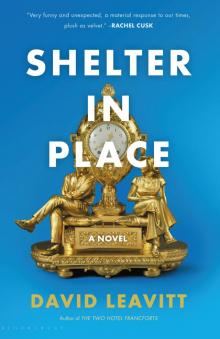 Shelter in Place
Shelter in Place The Man Who Knew Too Much: Alan Turing and the Invention of the Computer (Great Discoveries)
The Man Who Knew Too Much: Alan Turing and the Invention of the Computer (Great Discoveries) Family Dancing
Family Dancing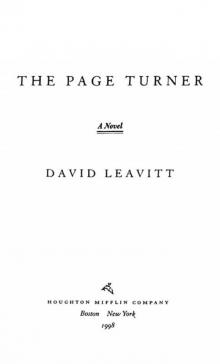 Page Turner Pa
Page Turner Pa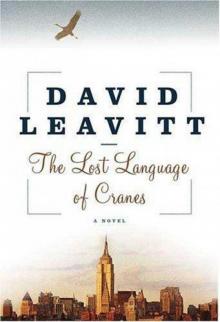 The Lost Language of Cranes: A Novel
The Lost Language of Cranes: A Novel The Body of Jonah Boyd
The Body of Jonah Boyd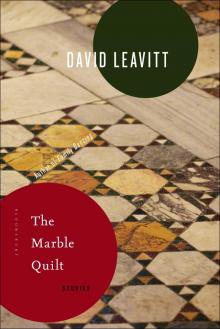 The Marble Quilt
The Marble Quilt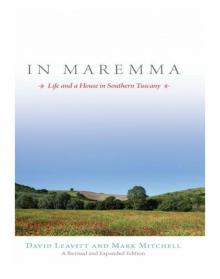 In Maremma
In Maremma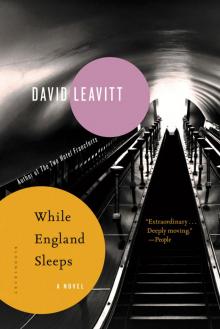 While England Sleeps
While England Sleeps A Place I've Never Been
A Place I've Never Been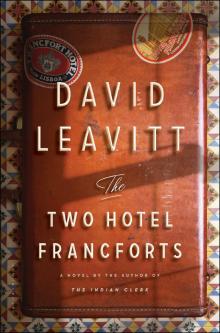 The Two Hotel Francforts
The Two Hotel Francforts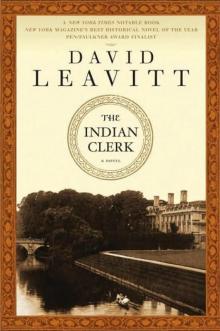 The Indian Clerk
The Indian Clerk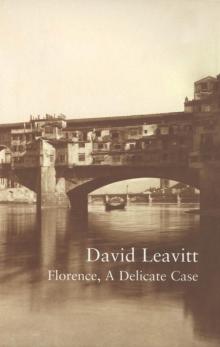 Florence
Florence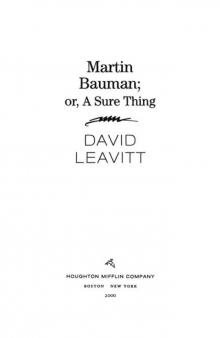 Martin Bauman
Martin Bauman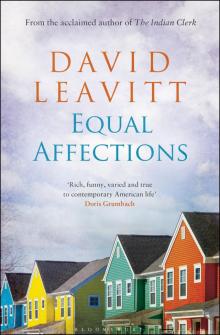 Equal Affections
Equal Affections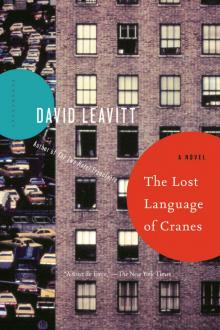 The Lost Language of Cranes
The Lost Language of Cranes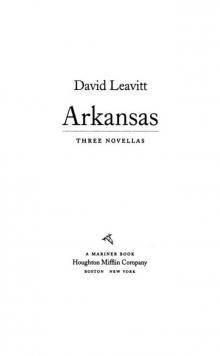 Arkansas
Arkansas